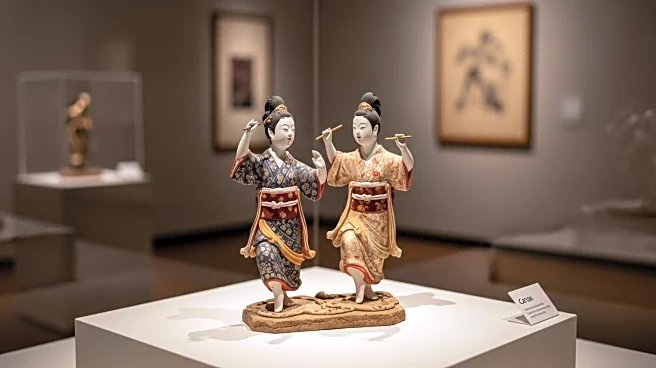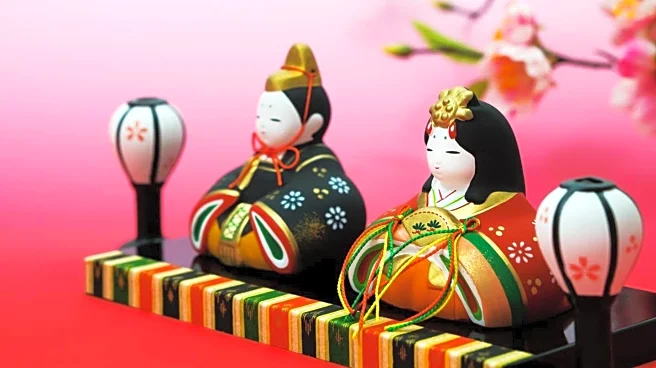What's Happening?
The Tokyo National Museum has unveiled two ancient clay figurines known as the 'Dancing People' or 'Haniwa Terracotta Dancers.' These figurines were discovered in 1930 during an excavation in Saitama prefecture, north of Tokyo, and are believed to date back to the sixth century. The haniwa were used as tomb decorations during the Kofun period of Japanese history, which spanned from 300 to 710. Originally simple clay cylinders, haniwa evolved to include figures such as humans, animals, and houses. The 'Dancing People' are notable for their simplistic design, featuring stick-like arms and open mouths, leading some researchers to suggest they represent singers or dancers.
Why It's Important?
The discovery and display of the 'Dancing People' haniwa provide valuable insights into the cultural practices and artistic expressions of ancient Japan. These figurines are significant as they reflect the evolution of funerary art and the beliefs surrounding the afterlife during the Kofun period. The haniwa's role in marking grave boundaries and possibly holding the souls of the deceased highlights the spiritual and ceremonial importance attributed to these objects. This exhibition not only enriches our understanding of Japanese history but also underscores the importance of preserving cultural heritage.













